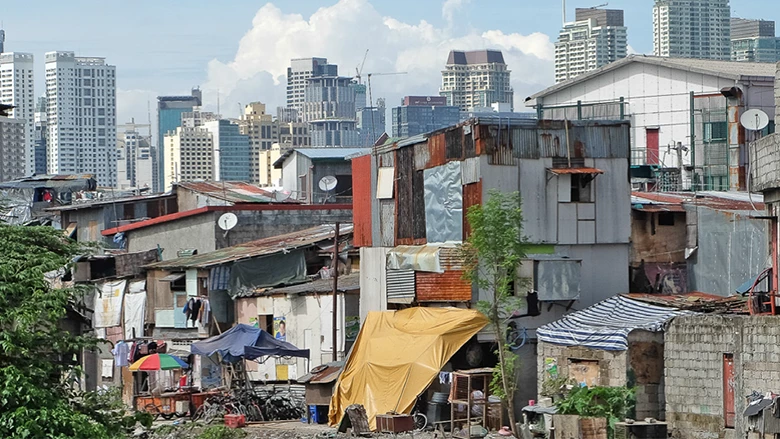
Better jobs, higher salaries and improved access to basic services – the bright lights of cities seem to promise these and more.
But for millions lured to these centres for innovation and prosperity, cities can also lead to a life of squalor. Access to safe drinking water or sanitation may be poor or non-existent. Makeshift homes may flood every time it rains. Keeping families fed may become a daily struggle.
Across East Asia and the Pacific, an estimated 250 million people are living in slums. This is the highest number among any region in the world because of the sheer size of populations in large countries such as China, Indonesia and the Philippines.
As city leaders and planners from around the world convene at the upcoming World Urban Forum (Feb 7-13) in Malaysia to discuss implementing the “New Urban Agenda”, addressing inequality and inclusion must be at the heart of this agenda – and must be an integral part of urban planning for governments across all regions.
In East Asia and the Pacific, fast-paced growth has transformed economies, lifted millions out of poverty and kick-started rapid urbanisation. But as cities multiply, so do the challenges in keeping up with commensurate planning and investments in physical infrastructure, affordable housing and transportation.
Consequently, low-income residents resort to living in poor conditions and locations that are vulnerable to environmental hazards such as hazardous waste, or to natural disasters such as flooding.
Widening inequalities follow and can undermine the sustainability of economic growth and slow poverty reduction, create divisions among cities’ populations and breed conflict and crime.
As outlined in the recent “World Bank East Asia and Pacific Cities: Expanding Opportunities for the Urban Poor” report, there are solutions for these multidimensional aspects of urban poverty and inequality.
Many of these solutions draw from Singapore, Korea, Japan and Malaysia – countries that have sustained robust economic growth and reduced urban poverty and inequality through investments in urban planning, infrastructure, and service provision.
They have targeted social programmes and fostered participation by citizens. As a result, these countries enjoy a greater degree of shared prosperity.
Other countries are following suit. Indonesia and Vietnam are carrying out robust programmes for upgrading slum communities and China is effectively using rental subsidies to provide housing for low-income residents.
These countries show that a sustained effort can reduce inequality, encourage more inclusive cities and strengthen harmony in communities.
An inclusive cities approach relies on equitable policies that do not leave groups behind. These policies fall into three categories: economic inclusion, spatial inclusion and social inclusion.
Economic inclusion means enacting policies that connect the urban poor with job markets, as has been done in Hanoi through the modernisation of road networks, and through linking nonmotorised transportation to bus rapid transit systems in Guangzhou, China.
Other approaches include improving access to credit and laws that protect informal workers and build resilience to external shocks such as disasters that can easily wipe out a family’s livelihood and savings in a moment.
Disaster planning in Can Tho, Dong Hoi, and early warning systems in China and Jakarta have been important to preventing shocks, particularly among the urban poor.
Promoting spatial inclusion starts with integrated urban planning that focuses on connectivity and affordable transport to reduce commuting costs and expand employment opportunities. Low-income financing, rental schemes or tenure security can broaden land and housing options – thwarting the proliferation of slums and, over time, increasing land values and encouraging prosperity.
As the successful example of Singapore shows, providing equitable access to infrastructure and basic services positively impacts health, productivity and welfare.
Lastly, social inclusion – that is, recognising the rights of all residents regardless of identity, income status, ethnic status or place of origin – can be the less apparent key ingredient.
Countries such as the Philippines and Indonesia have shown that it is possible to provide successful targeted social safety net programmes to reach those urban residents in greatest need.
More inclusive and liveable cities are achievable goals, and East Asia and the Pacific face an opportunity to replicate best practices in urban planning across the region.
Governments, both national and local, the private sector and citizens all have a role to play.
As city leaders and planners convene at the World Urban Forum to define the steps forward for our cities – our collective future – let us act now to build inclusive cities in East Asia.
(First published on The Star Online)


Join the Conversation